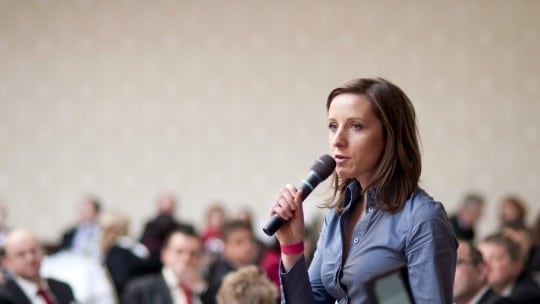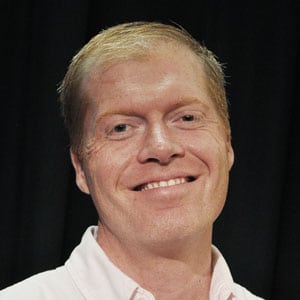
[Editor’s Note: Part I of this article about writing a speech for an executive appeared in PR News, April 11.]
In my experience, it’s often helpful to save writing the opening of the speech for later in the process, rather than trying to start with some engaging anecdote or shocking fact and then trying to build your speech around your opening.
Your opening needs to hit fast and hard, because you’ll lose audience members every minute your executive is speaking. Even with a really good speech, you start losing people after the first 60 seconds. See if you can keep the introduction to less than 15% of the entire speech.
Capturing the Audience Immediately

A lot of attention is gained at the beginning of a speech, before the topic is broached. Consider these when you’re advising a speaker before the big event.
Eye contact. Make sure you coach your speaker on the importance of making eye contact with members of the audience before he or she begins speaking.
State who you are. Yes, most audience members already will know, but an introduction helps to make a speaker more credible, human, and relatable.
Say something about the company. Even if it’s the motto. Or a foreshadowing statement about the speech itself.
Say “I’m happy to be here with you.” This helps humanize the speaker, and forges a bond with the audience.
Slam them with an opening they can’t ignore. These might include: A dramatic statistic; a shocking fact; a humorous anecdote relating to the speech topic; an interesting a question—and have audience members raise their hands; a rhetorical question; a (very) short story; or a little-known fact about the occasion.
Note that humor may be your worst enemy in the opening of a speech, or at any point. If the executive you’re writing for isn’t funny, don’t try to make him or her so. Stick to the facts, and try to make the speaker relatable. Another important thing to do in the first minute is to make sure the audience knows why it needs to hear the message. This keeps an audience attentive.
What Makes a Closing Effective?
“Great is the art of beginning,” said Henry Wadsworth Longfellow, “but greater is the art of ending.” While Longfellow was speaking of poetry, the sentiment applies also to speeches. A strong ending leaves your audience with something to remember. The good thing is, your ending can be the third time you state the main message of the speech.
Unfortunately, some of the best executive speakers I’ve worked with have lost an audience with a long-winded or last-minute “add on.” Caution your speaker that not sticking to the speech document, talking points or outline can reduce the impact of the message.
Ideally, ending the speech should correspond with the length of the entire speech, since this is where you’re driving home your main point. For a five-minute speech, the closing should be not longer than 45 seconds. For a 10-minute speech, keep the closing to less than 90 seconds.
Hopefully you will work with executives who are comfortable enough to conclude without a spoken signal like, “What I’d like to leave you with today is…” Other, less-seasoned speakers might need: “My purpose today has been...” or “I want to leave you with….” For speech endings, metaphors, analogies, a surprise and axioms all work, but make sure they’re relevant and used in the right spot.
Despite this serious topic, I encourage you to have fun writing speeches. Most executives will respond positively when they see the variety of ways to deliver their key message. Just remember to keep it short, know what your executive wants from you, and end strong. Other than that, get creative. It makes writing the speech much more fun, and it helps to stretch your writing skills. And if you take a risk or two, you might just write a speech that your audience will remember for a long time.
CONTACT: [email protected]
